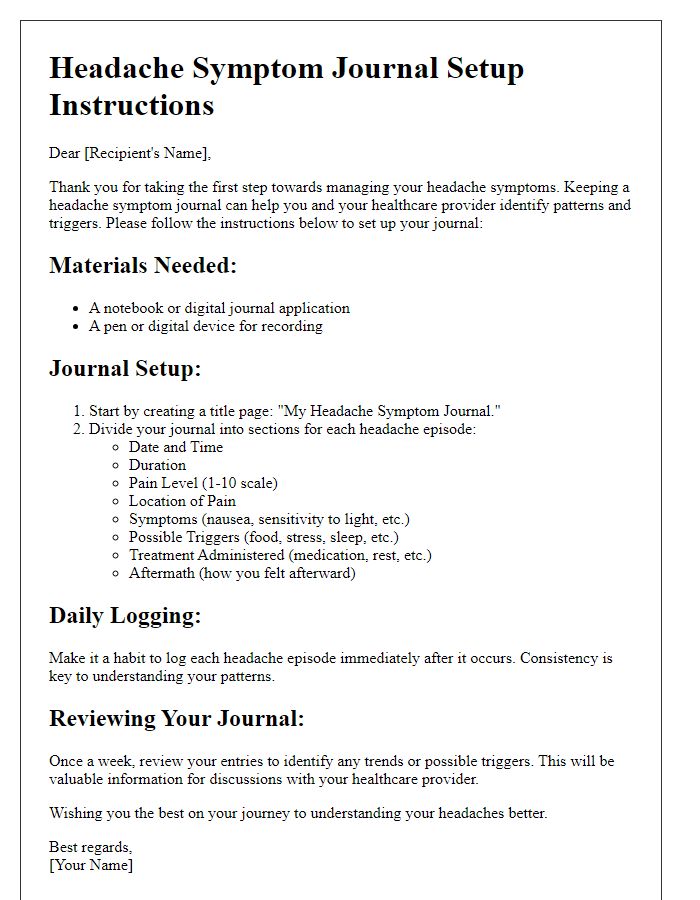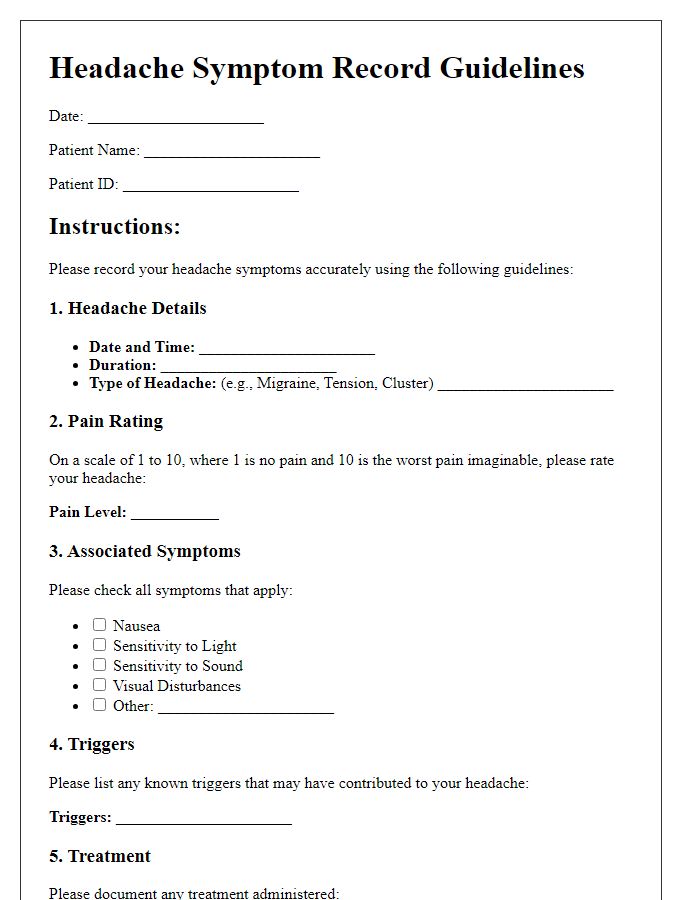If you're one of the millions who suffer from migraines, keeping a symptom diary can be an invaluable tool for understanding your triggers and patterns. This simple yet effective practice allows you to track the frequency, intensity, and potential causes of your headaches, providing insights that can lead to better management techniques. Not only can it help you communicate more effectively with your healthcare provider, but it also empowers you to take control of your migraine journey. Ready to learn how to start your own migraine symptom diary? Keep reading!

Purpose of the diary
A migraine symptom diary serves as a valuable tool for individuals experiencing chronic headaches, enabling them to track specific migraine episodes, frequency, duration, and potential triggers. By recording detailed information regarding migraine onset, such as date and time, intensity on a scale from 1 to 10, and associated symptoms like nausea or visual disturbances, users gain insight into patterns and correlations. Additionally, documenting possible triggers, including dietary factors, sleep patterns, stress levels, and weather changes, aids healthcare professionals in developing personalized treatment plans. This systematic approach ultimately contributes to more effective migraine management and improved overall quality of life.
How to record symptoms
A migraine symptom diary serves as an essential tool for individuals experiencing recurring headaches, providing detailed records of symptoms, triggers, and patterns. Each entry should begin with the date and time of onset, allowing for precise tracking of episodes. Duration, intensity (rate on a scale from 1-10), and type of pain (such as pulsating or throbbing) should be noted, along with accompanying symptoms like nausea, light sensitivity, or aura phenomena. Environmental factors, including weather conditions (temperature and humidity levels on the day), dietary influences, and stress levels throughout the day can provide valuable contextual information. Also, document any medications taken, including dosage and timing, to assess their effectiveness. Review and analyze diary entries regularly, aiming to identify patterns or triggers over a period of two to four weeks, which can facilitate discussions with healthcare providers and aid in developing personalized management strategies.
Frequency and timing of entries
Frequent documenting of migraine symptoms plays a crucial role in understanding triggers and patterns. Patients should record entries daily, specifying the number of migraine episodes experienced, with a specific focus on their timing. For instance, noting whether headaches occur in the morning, afternoon, or evening can provide valuable insights. Each entry should detail the duration of symptoms, intensity on a scale from one to ten, and additional symptoms such as nausea or sensitivity to light, as these factors can significantly impact the analysis. Consistent tracking over weeks or months may help healthcare providers formulate effective treatment plans tailored to individual needs.
Triggers and lifestyle factors
Maintaining a migraine symptom diary is an essential tool for identifying triggers and lifestyle factors that contribute to migraine episodes. Record the date and time of each migraine occurrence, rating the pain on a scale from 1 to 10, as well as the duration of the attack. Note the location of the pain, be it on one side of the head (uni-lateral) or both sides (bilateral). Document any potential triggers experienced prior to the onset, such as specific foods (like aged cheese, chocolate, or processed meats), environmental factors (like bright lights or strong smells), or stress levels (categorized as low, moderate, high). Lifestyle factors play a significant role; track sleep patterns, including hours slept and quality of sleep, hydration levels (amount of water consumed), and physical activity (type and duration of exercise). This detailed account will help healthcare providers create personalized management strategies based on patterns observed in your triggers and lifestyle choices.
Tracking medication use and response
Tracking medication use and response is crucial for managing migraine symptoms effectively. Users should note the specific medication name, dosage taken, and time of administration, documenting each instance meticulously. Additionally, patients should record any notable changes in migraine symptoms post-medication, using a scale from 1 to 10 to indicate pain intensity and associated symptoms such as nausea or light sensitivity. It's essential to monitor the frequency of migraine episodes, detailing how often medications are required over a week or month. Observations regarding any side effects should also be documented, noting the type and duration. This diary aids in identifying patterns, medication efficacy, and potential triggers, contributing significantly to personalized treatment plans.
Letter Template For Migraine Symptom Diary Instructions Samples
Letter template of migraine monitoring diary guidelines for effective usage.










Comments